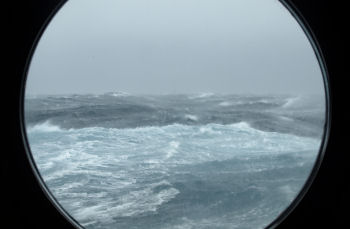Physics
The oceans play a major role in moving heat around our planet. The equator receives about twice as much solar radiation than the poles, in part because the Sun shines nearly perpendicularly to the Earth's surface at the equator. If the heat from the Sun were not redistributed, the poles would be much colder and the equator much hotter than they are.
Some heat is redistributed by the atmosphere, but around half is carried by ocean currents. Water is particularly good at storing heat - in fact, the top three metres of the ocean can hold as much heat as the whole atmosphere. So making any realistic predictions about future changes in the distribution of heat around our planet depends on having a detailed picture of ocean currents and circulation.

As well as transporting heat, ocean currents can also carry marine life, either as adult organisms or their tiny floating larvae. To understand patterns of biodiversity - such as at the deep-sea vents of the Cayman Trough - we need to know about the ocean circulation of the area.
What we hope to find out is where the deep water in the Cayman Trough comes from. By looking at its signature of temperature and salinity, our oceanographers can deduce where in the oceans it originated. By measuring ocean currents, we can also calculate how long water stays in the Cayman Trough. This will help to put the oceanography of the Trough into the wider context of the circulation of the Caribbean and beyond.
Page 1: Motion of the ocean
Page 2: Darkness upon the face of the deep
Want to dive deeper?
Find out more about ocean circulation
Science
Find out more about the Cayman Trough, undersea volcanoes, deep-sea vents,
and the inhabitants of the abyss.
What are we investigating?


